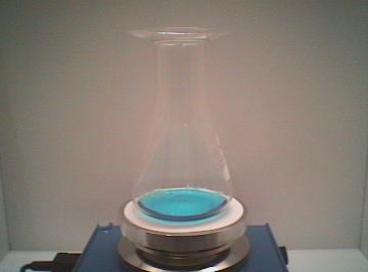
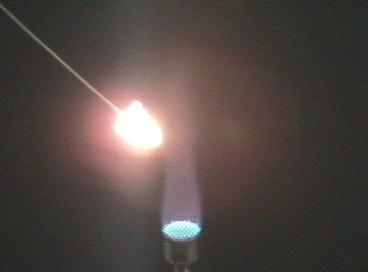
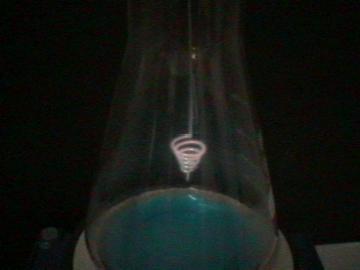
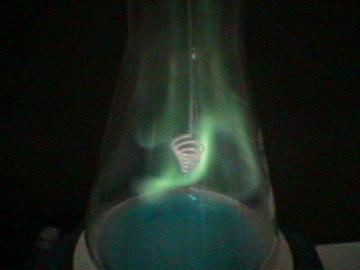
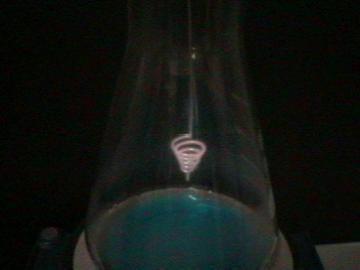

| 1. |  |
2. |  |
| Methanol (dyed blue) is heated | A platinum wire is heated till glowing | ||
| 3. |  |
4. |  |
| The glowing platinum wire is hung over the methanol | The methanol ignites | ||
| 5. |  |
6. |  |
| This process repeats itself ... | ... until all the methanol has combusted. |
| Photo 1: | Methanol (dyed with methyl blue) is heated in an Erlenmeyer flask. |
| Photo 2: | Simultaneously, a platinum wire is heated until glowing. The wire is next hung in the Erlenmeyer flask. |
| Photo 3: | At first, the platinum wire glows weakly. After a short amount of time,
however, it begins to glow more intensely. The cause is the catalytic oxidation
of methanol to formaldehyde according to the following equation:
CH3OH + 1/2 O2 ® CH2O + H2O This exothermic reaction, which takes place directly on the outer surface of the platinum wire, causes the wire to heat up. |
| Photo 4: | At a given temperature, the wire ignites the methanol/air mixture,
which burns with a green flame:
CH3OH + 1.5 O2 ® CO2 + 2 H2O The flames are extinguished when the oxygen present in the air in the flask is consumed. In order to make the flames more visible, boric acid and concentrated sulfuric acid (catalyst) are added to the methanol. This forms the volatile boric acid trimethyl ester, which burns with a green flame: B2O3 + 6 CH3OH |
| Photos 5 + 6: | The process repeats itself periodically as long as methanol is available and as long as the flask is constantly replenished with a fresh stream of oxygen-containing air. |